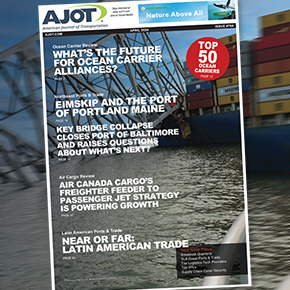
The offshore wind roller coaster pushes on in the Gulf of Mexico
When no auction bids came through at the Aug. 29 deadline to buy the rights to develop two wind farm sites off the Texas coast, it was startling that no bids arrived. One bid was received for a Gulf site off the Louisiana coast.

Wind cargo trade to increase for booming Galveston
With passage of federal legislation renewing tax credits for wind turbine projects, wind cargo imports are expected to increase in the first half of 2024, reports Rodger Rees, Galveston Wharves port director and CEO for the Port of Galveston.

Texas offshore wind launch doesn’t fly
But Corpus Christi continues rolling in project cargo

Miami International Airport set for major expansion
Miami International Airport is expanding and that is good news for perishable shippers.

Reefer ocean container business balances again in 2023
Ed Treacy, vice president, supply chain and sustainability, for the Newark-based International Fresh Produce Association (IFPA) says that unlike what happened during the post-COVID surge, containers and chassis are not the problem and freight rates are falling.

Port of Wilmington Delaware hits the century mark
As the Port of Wilmington celebrates its centennial anniversary, Joe Cruise, CEO, GT USA Wilmington, also applauds the Delaware seaport’s recent success and plans for vast future expansion.

All cargoes are booming in the Delaware River seaports
Seaports in Philadelphia, southern New Jersey and Wilmington, DE, are seemingly always prospering and expanding.

Mexican fresh export success reflects global industry
Skyrocketing North American fruit and vegetable imports are coming from many sources.

Global produce industry shines at refreshing new convention
The first-ever Global Produce & Floral Show (GPFS) burst onto the scene in Orlando Oct. 27-29.

Betting on berries and other healthy foods
USDA’s “U.S. Agricultural Projections” report, published in February 2021, shows a 2019 value of $22.9 billion for fresh fruits and vegetables imported to the U.S.
© Copyright 1999–2024 American Journal of Transportation. All Rights Reserved
